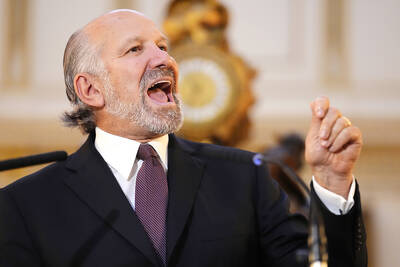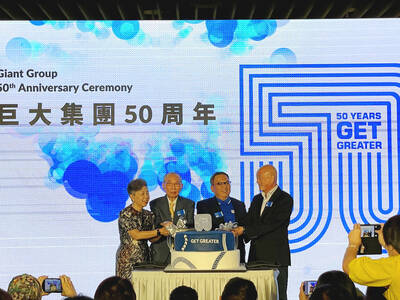The good news is that the latest polls confirm that roughly half of all Americans believe extraterrestrial life exists. The weird news is that a similar fraction think some of it is visiting Earth.
Several recent TV shows have soberly addressed the possibility that alien craft are violating our airspace, occasionally touching down long enough to allow their crews to conduct bizarre experiments on hapless citizens. While these shows tantalize viewers by suggesting that they are finally going to get to the bottom of the "UFO debate," they never do.
That's because the evidence is weak. During a recent show in which I participated, guest experts who have long studied UFOs argued for extraterrestrial presence by showing photographs of putative alien saucers at low altitudes. Some of these objects appeared as out-of- focus lights, others resembled hubcaps or frisbees.
Since the former are perforce ambiguous, the latter command more of my attention. How can we know they're not hubcaps, tossed into the air by a hoaxer with a camera? The reply from one expert was, "these photographs pass muster." When quizzed on exactly which muster was mastered, his response was that "atmospheric effects give us a limit on the distance and careful examination has ruled out photographic trickery." Well, the former is chancy, and relies on some assumption about atmospheric conditions (was it a foggy day in San Francisco?), and the latter proves nothing. A real shot of an airborne hubcap would be free of photographic trickery.
Additional evidence is "expert testimony." Pilots, astronauts, and others, have all claimed to see odd craft. It's safe to say that these witnesses have seen something. But just because you don't recognize an aerial phenomenon doesn't mean it's an extraterrestrial visitor.
That requires additional evidence that, so far, seems to be unconvincing. What about those folks who claim to have been abducted? On the TV program, the UFO experts offered photos of scoop marks decorating the arms and legs of human subjects, and claimed that these minor disfigurements were due to alien malfeasance. But even aside from the puzzling question of why beings from distant worlds would come to Earth to melon-ball the locals, this evidence was, once again, ambiguous. The scoops might be caused by aliens, but then again they might be cigarette burns.
When push came to shove, and when pressed as to whether there's compelling proof of extraterrestrial visitation, the experts on this show backed off by saying "well, we don't know where they come from. But something is definitely going on."
The latter statement is hardly controversial. The former is goofy. If the saucers are not from outer space, where are they from? Belgium?
The bottom line is that the evidence for extraterrestrial visitors has not convinced many scientists. Very few academics are writing papers for refereed journals about alien craft or their occupants.
Confronted with this uncomfortable fact, UFO experts take refuge in two explanations:
1. The material that would be convincing proof has been collected and hidden by the authorities. While appealing, this is an argument from ignorance, and perforce implies that every government in the world has efficiently squirrelled away all the best alien artefacts.
2. Scientists have refused to study this phenomenon. In other words, the scientists should blame themselves for the fact that the visitation hypothesis has failed to sway them. This is not only unfair, it is misguided. Sure, few researchers have themselves sifted through the stories, the videos, and the odd photos that comprise the evidence for alien presence. But they don't have to.
The burden of proof is on those making the claims, not those who find the data dubious. The UFO advocates are asking us to believe something very important.
After all, there could hardly be any discovery more dramatic than visitors from other worlds. If they could prove that the aliens are here, I would be as awestruck as anyone. But I still await a compelling Exhibit A.
Seth Shostak is senior astronomer at the Seti (Search for Extraterrestrial Intelligence) institute, California).

In recent weeks the Trump Administration has been demanding that Taiwan transfer half of its chip manufacturing to the US. In an interview with NewsNation, US Secretary of Commerce Howard Lutnick said that the US would need 50 percent of domestic chip production to protect Taiwan. He stated, discussing Taiwan’s chip production: “My argument to them was, well, if you have 95 percent, how am I gonna get it to protect you? You’re going to put it on a plane? You’re going to put it on a boat?” The stench of the Trump Administration’s mafia-style notions of “protection” was strong

Every now and then, it’s nice to just point somewhere on a map and head out with no plan. In Taiwan, where convenience reigns, food options are plentiful and people are generally friendly and helpful, this type of trip is that much easier to pull off. One day last November, a spur-of-the-moment day hike in the hills of Chiayi County turned into a surprisingly memorable experience that impressed on me once again how fortunate we all are to call this island home. The scenery I walked through that day — a mix of forest and farms reaching up into the clouds

Late last month US authorities used allegations of forced labor at bicycle manufacturer Giant Group (巨大集團) to block imports from the firm. CNN reported: “Giant, the world’s largest bike manufacturer, on Thursday warned of delays to shipments to the United States after American customs officials announced a surprise ban on imports over unspecified forced labor accusations.” The order to stop shipments, from the US Customs and Border Protection (CBP), came as a surprise to Giant, company officials said. Giant spokesman Ken Li (李書耕) said that the CPB never visited the company’s factories to conduct on-site investigations, nor to interview or

With one week left until election day, the drama is high in the race for the Chinese Nationalist Party (KMT) chair. The race is still potentially wide open between the three frontrunners. The most accurate poll is done by Apollo Survey & Research Co (艾普羅民調公司), which was conducted a week and a half ago with two-thirds of the respondents party members, who are the only ones eligible to vote. For details on the candidates, check the Oct. 4 edition of this column, “A look at the KMT chair candidates” on page 12. The popular frontrunner was 56-year-old Cheng Li-wun (鄭麗文)